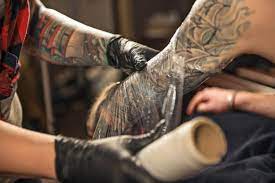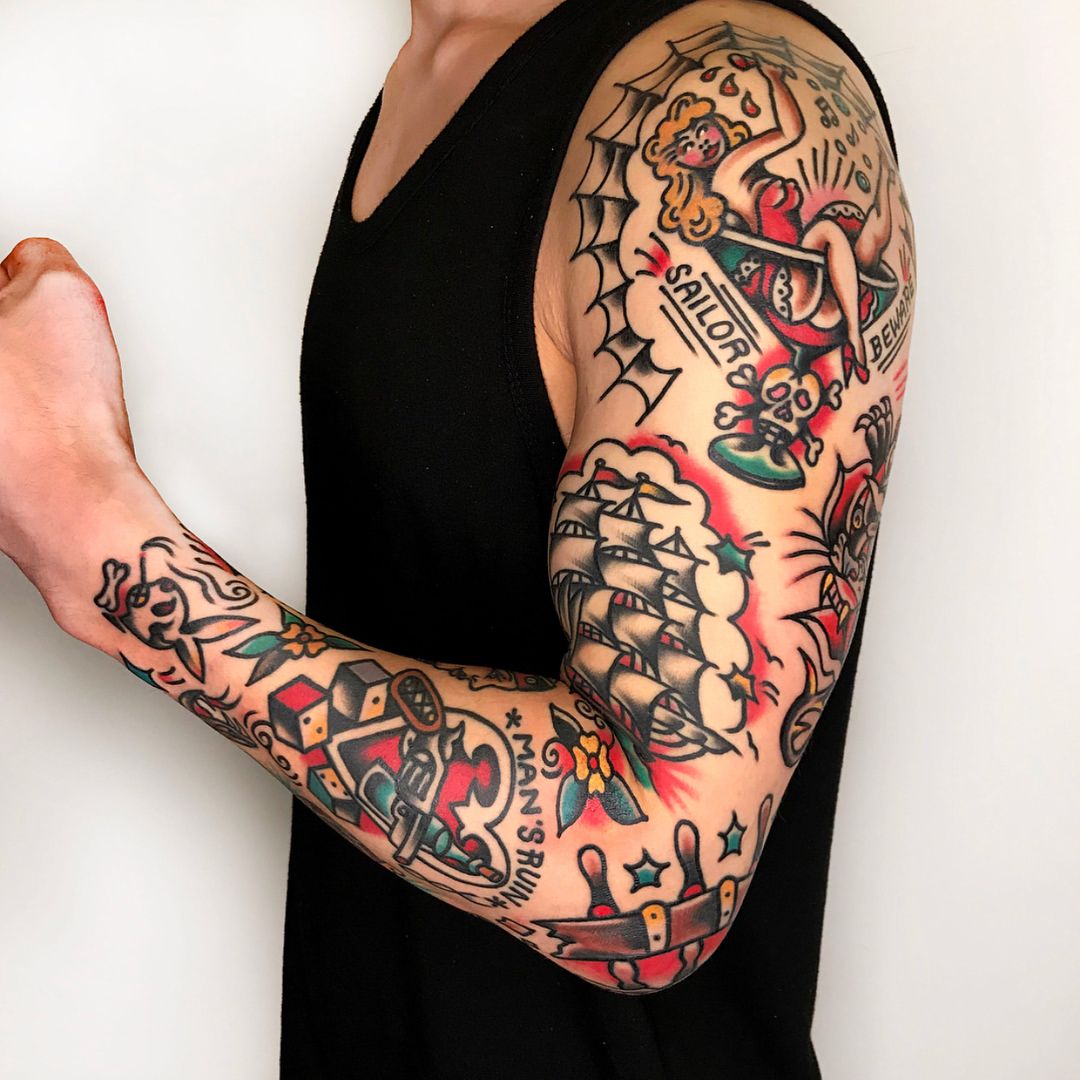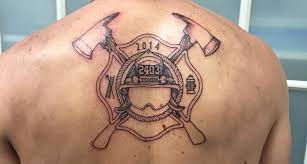The First 48 Hours

At this crucial stage, you must clean your tattoo several times daily with unscented, hypoallergenic soap to maintain its condition and protect the ink. At this stage, your tattoo may look dull and flaky. It is normal to ooze blood, lymphatic fluid, and ink from time to time; avoid scratching or picking at its scabs instead of using an appropriate moisturizer to keep the area hydrated.
The Second Week
After one week, your tattoo should have dried and begun to peel and scab. Your skin may still be red, sensitive, shiny, or waxy in certain lights. Itching is a natural part of healing a wound. To ensure optimal results, keep your tattoo clean and hydrated; excessive sweating, saunas, or hot yoga may disrupt this process and hamper recovery.
The Third Week
By the end of this week, most scabs should have begun flaking and falling off, and most of the itchy sensations should have subsided, although some symptoms may still exist. Do not pick or rub at flaking skin; use non-scented soap, lotion, and tattoo-specific moisturizer to keep it soft and supple. Wash and moisturize at least 1-2 times each day. Additionally, wearing loose clothing will reduce friction for healing purposes.
The Fourth Week
By week four, all the scabbing should have subsided completely, and your tattoo may look slightly shiny or dull due to settling into its new skin; this is normal. At this stage, most Tattoos should be sufficiently protected before returning to exercise and swimming activities, provided they remain clean and moisturized regularly. Saunas should also be avoided.
The Fifth Week
At this stage, your tattoo should start to improve as the scabbing subsides; however, deeper skin layers are still healing. Exercise, swimming, direct sunlight, and scratching as the skin heals can all delay its recovery time; allow it to breathe by not overstimulation.
The Sixth Week
Most of the scabs should have fallen off at this point, leaving behind a thin layer of skin. Keep this area clean and avoid direct sunlight for optimal healing. Your tattoo should still be considered an open wound in its initial week. Expect typical symptoms from any injury to your body, such as redness, oozing, or mild swelling. Stay hydrated to help speed up healing time. Keep moisturizing as often as possible so your tattoo heals faster.
The Seventh Week
At this point, most of the scabbing and flaking should have resolved, and your tattoo should look more typical; however, some individuals may still experience itching or redness in the area. Any itching or redness that persists should be seen as a possible indicator of infection, so if this occurs, a physician must be consulted immediately, as well as continuing with moisturizer applications as necessary.
The Eighth Week
After your tattoo has dried, it begins to scab over. Scabs are your skin’s way of protecting open wounds, where itching and flaking may arise in their early stages. This stage often leads to discomfort. Margarita advises his clients to wash twice daily with antibacterial soap and apply healing ointment during this stage. Swimming and prolonged sun exposure should also be avoided to maximize treatment’s benefit.
The Ninth Week
Your tattoo may have developed a layer of dry skin at this stage. While this can temporarily make its colors duller, don’t panic; this condition should pass with time. Once the scabs have completely fallen off, your tattoo should be healed on its surface. However, it’s still important to moisturize it regularly and prevent excessive sweating or water exposure.
The Tenth Week
Scabs will start to peel away, leaving behind duller ink. This is perfectly normal and will eventually return to its former brightness. The outer layers have healed at this stage, while deeper layers may take several months to fully regenerate and return to a vibrant state. Therefore, it’s crucial that aftercare guidelines continue being adhered to.

